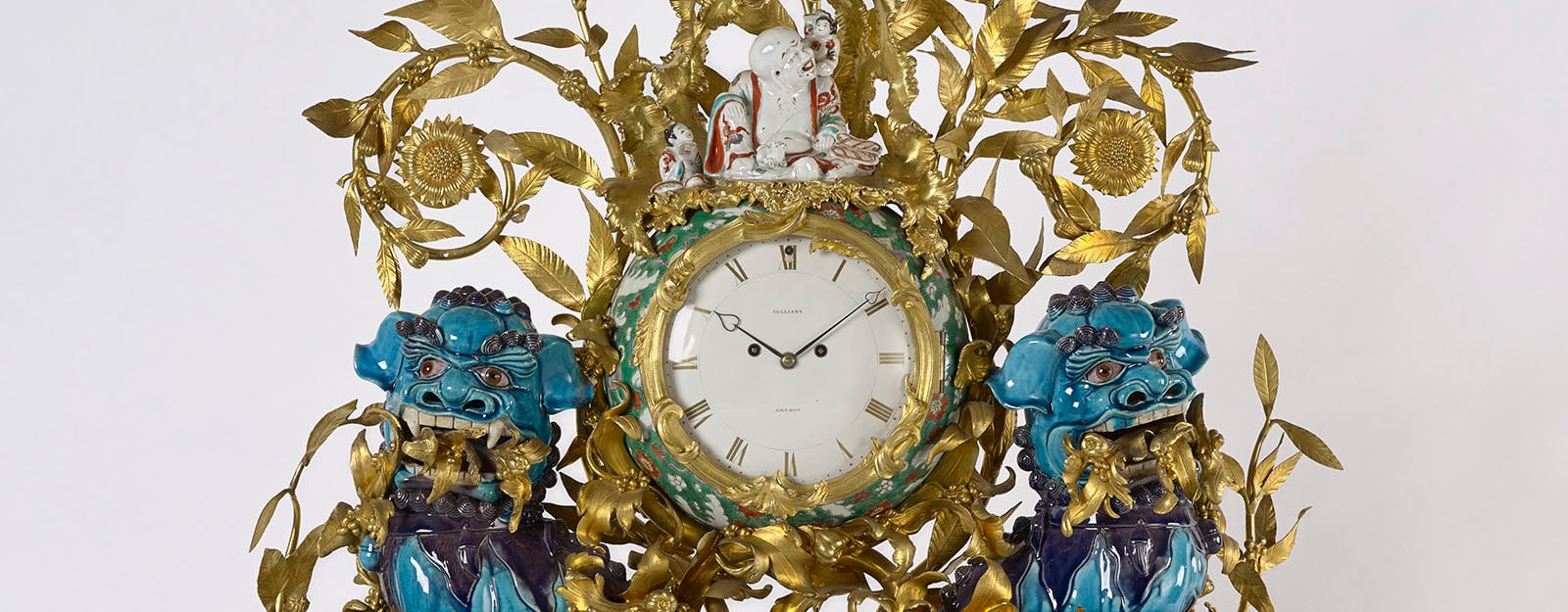
A Prince's Treasure
120 objects from the Royal Collection return to the Royal Pavilion in Brighton
ADAM WEISWEILER (1744-1820)
Ebony veneer console tables with gilt-bronze mounts
c.1787-90Oak, ebony, gilt bronze, marble | 94.5 x 175.8 x 53.5 cm (whole object) | RCIN 13
A pair of console tables of oak veneered in ebony. Each table has chased gilt bronze mounts and a red griotte marble top. Open-fronted and open-ended and with a mirrored back, they have a large central section flanked by two end sections which are each fitted with a curved griotte marble shelf. They have fret band decoration on the frieze and on the uprights, the former incoprorating peacocks framed in roundels, the latter edged with bamboo columns and terminating at the level of the frieze in Chinese capitals hung with bells. The tasselled drapery mount in the central section is seemingly attached to an arched bamboo pole which hangs across the central opening and supports in each spandrel a dragon in patinated bronze. A pierced lambrequin motif runs around the bottom of the table interrupted at four corners by a paired corkscrew gilt bronze feet.
This pair of elaborately mounted tables and their companion pair with Chinese figures (RCIN 181.1-2), designed for the display of ornaments, formed part of the highly fashionable decoration of the new Chinese Room at Carlton House, and were probably supplied by the Parisian dealer-decorator Dominique Daguerre, working to the direction of the Prince’s architect Henry Holland. Of each pair, one table is original, while the second is a copy made in 1819 by Edward Bailey. The two original tables were moved from the Chinese Drawing Room to the Bow Room, Principal Floor, in 1811, and after the copies had been made, all four tables were installed in 1819 in the Music Room Gallery, Brighton Pavilion.
This pair of elaborately mounted tables and their companion pair with Chinese figures (RCIN 181.1-2), designed for the display of ornaments, formed part of the highly fashionable decoration of the new Chinese Room at Carlton House, and were probably supplied by the Parisian dealer-decorator Dominique Daguerre, working to the direction of the Prince’s architect Henry Holland. Of each pair, one table is original, while the second is a copy made in 1819 by Edward Bailey. The two original tables were moved from the Chinese Drawing Room to the Bow Room, Principal Floor, in 1811, and after the copies had been made, all four tables were installed in 1819 in the Music Room Gallery, Brighton Pavilion.







